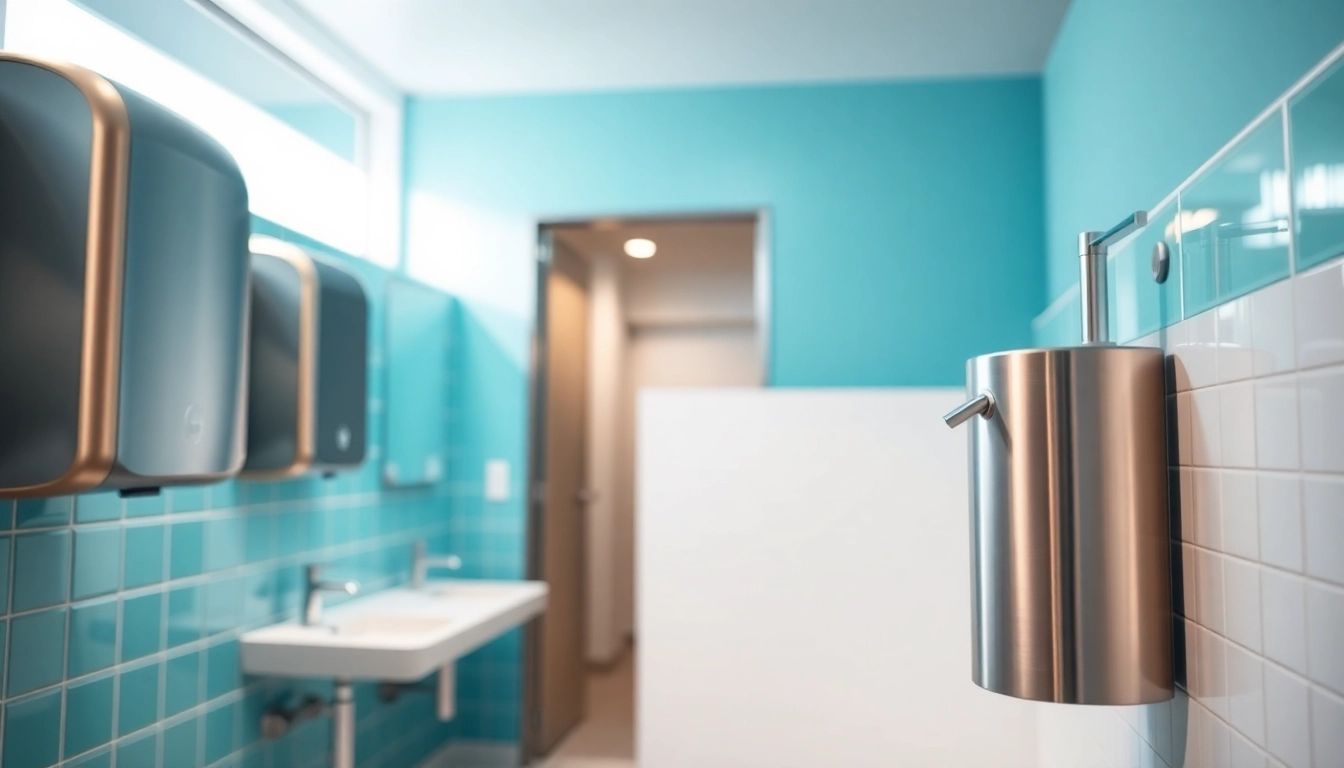Understanding Commercial Restroom Supplies
In modern business environments, the functionality and aesthetics of restrooms play a critical role in enhancing the overall customer experience. The term Commercial Restroom Supplies encompasses a wide range of essential items that contribute not only to hygiene but also to the convenience and comfort of users. This comprehensive guide delves into various aspects of commercial restroom supplies, including their types, importance, selection criteria, and maintenance processes.
What Are Commercial Restroom Supplies?
Commercial restroom supplies refer to products and fixtures that are critical for the functionality and sanitation of public restrooms in commercial settings such as offices, restaurants, shopping centers, and more. This category includes items that facilitate personal hygiene, waste management, and aesthetic presentation. Examples of commercial restroom supplies include:
- Hand dryers
- Soap dispensers
- Toilet paper dispensers
- Waste receptacles
- Feminine hygiene products
- Scent dispensers
The Importance of Quality Supplies
The quality of commercial restroom supplies directly impacts user satisfaction. High-quality supplies enhance user experiences by ensuring adequate hygiene and eliminating unpleasant odors. Furthermore, investing in durable products reduces maintenance costs over time and helps establish a business’s reputation for cleanliness and responsibility.
Key Industry Standards
Compliance with industry standards is crucial for any business operating public restrooms. The Americans with Disabilities Act (ADA) outlines specific requirements for restroom accessibility, ensuring that facilities are usable by individuals with disabilities. Additionally, restroom supplies should meet safety standards to minimize risks of accidents and injuries. Understanding these regulations can inform better purchasing decisions and facility designs.
Types of Commercial Restroom Supplies
Hand Dryers and Their Features
Hand dryers are a popular choice for many commercial restrooms due to their effectiveness and environmentally friendly qualities. They eliminate the need for paper towels, significantly reducing waste. There are two primary types of hand dryers:
- Traditional Hand Dryers: Utilizing heated air, these dryers dry hands within 30 seconds to a minute.
- High-Speed Hand Dryers: Equipped with advanced technology, high-speed models can dry hands in as little as 10 to 15 seconds, making them more efficient and energy-saving.
Additional features to consider include noise levels, energy consumption, and sensitivity. Investing in models that are quieter and more energy-efficient can contribute to a better restroom experience overall.
Soap Dispensers: Options and Benefits
Soap dispensers come in various types, each offering unique benefits:
- Manual Dispensers: These require users to pump soap manually, which can reduce the spread of germs, depending on the design.
- Automatic Dispensers: Utilizing motion sensors, these allow for touchless operation, further improving hygiene by minimizing contact.
- Refillable vs. Pre-Filled: Refillable dispensers are cost-effective over time, while pre-filled options save time during maintenance.
Choosing the right soap dispenser aligns with the overall user experience strategy, prioritizing ease of use and hygiene.
Additional Supplies: From Toilet Paper to Waste Receptacles
Other essential restroom supplies include:
- Toilet Paper: Available in various configurations—single, double, or multifold—users often prefer softer, more absorbent options.
- Waste Receptacles: These are vital for maintaining cleanliness. Choosing closed-top or foot-operated receptacles can enhance sanitation.
- Feminine Hygiene Products: Offering sanitary napkin disposal units contributes to user convenience and enhances the restroom’s functionality.
Choosing the Right Supplies for Your Business
Assessing Your Specific Needs
The first step in selecting commercial restroom supplies is to assess specific needs based on the demographic of the business. Consider factors such as:
- The volume of foot traffic
- The duration of visits
- User demographics
For instance, high-traffic areas may require more robust and easily maintained equipment, while luxury businesses might prioritize aesthetics and comfort.
Comparative Features of Popular Brands
Brand comparison is essential for selecting quality restroom supplies. Brands like Bobrick, Sloan, and Cintas offer various functionalities and designs tailored for different needs. Evaluation criteria include:
- Product warranties
- Customer reviews and feedback
- Availability of replacement parts
Cost vs. Quality Analysis
It may be tempting to opt for cheaper supplies to cut costs; however, quality should never be compromised. Performing a cost-benefit analysis can help evaluate the long-term savings associated with investing in high-quality items. Frequently, cheaper products lead to higher replacement and maintenance costs.
Benefits of Modern Commercial Restroom Supplies
Enhanced User Experience
Modern restroom supplies contribute significantly to user satisfaction. Items like touchless faucets and automatic soap dispensers foster a sense of comfort and cleanliness. Furthermore, well-curated supplies reflect a business’s values toward hygiene and customer care.
Improving Hygiene and Sanitation
Effective restroom supplies minimize the risk of cross-contamination and communicable diseases. Touchless technologies and regular replenishment schedules ensure facilities remain sanitary, which is crucial during health crises.
Eco-Friendly Options and Sustainability
Many industries are shifting towards sustainability, and restroom supplies are no exception. Eco-friendly options, such as biodegradable soaps and energy-efficient hand dryers, are increasingly gaining traction. These choices not only reduce the environmental footprint but also resonate with consumers who value sustainability.
Maintaining Your Commercial Restroom Supplies
Regular Cleaning and Maintenance Tips
Routine maintenance is paramount for the longevity of restroom supplies. Prioritize cleaning schedules that include:
- Daily cleaning of dispensers and surfaces
- Regular checks on the functionality of hand dryers and soap dispensers
- Restocking supplies before they run out
Signs of Wear and When to Replace Supplies
Knowing when to replace restroom supplies is essential. Signs of wear may include:
- Decreased functionality (e.g., hand dryers not producing adequate airflow)
- Visible damage (e.g., cracked or rusted fixtures)
Maximizing Longevity of Products
To maximize the lifespan of commercial restroom supplies, regularly assess operational conditions. Ensure environments are well-maintained, reducing wear and tear. Additionally, educating staff on proper usage can prevent premature breakdowns.
